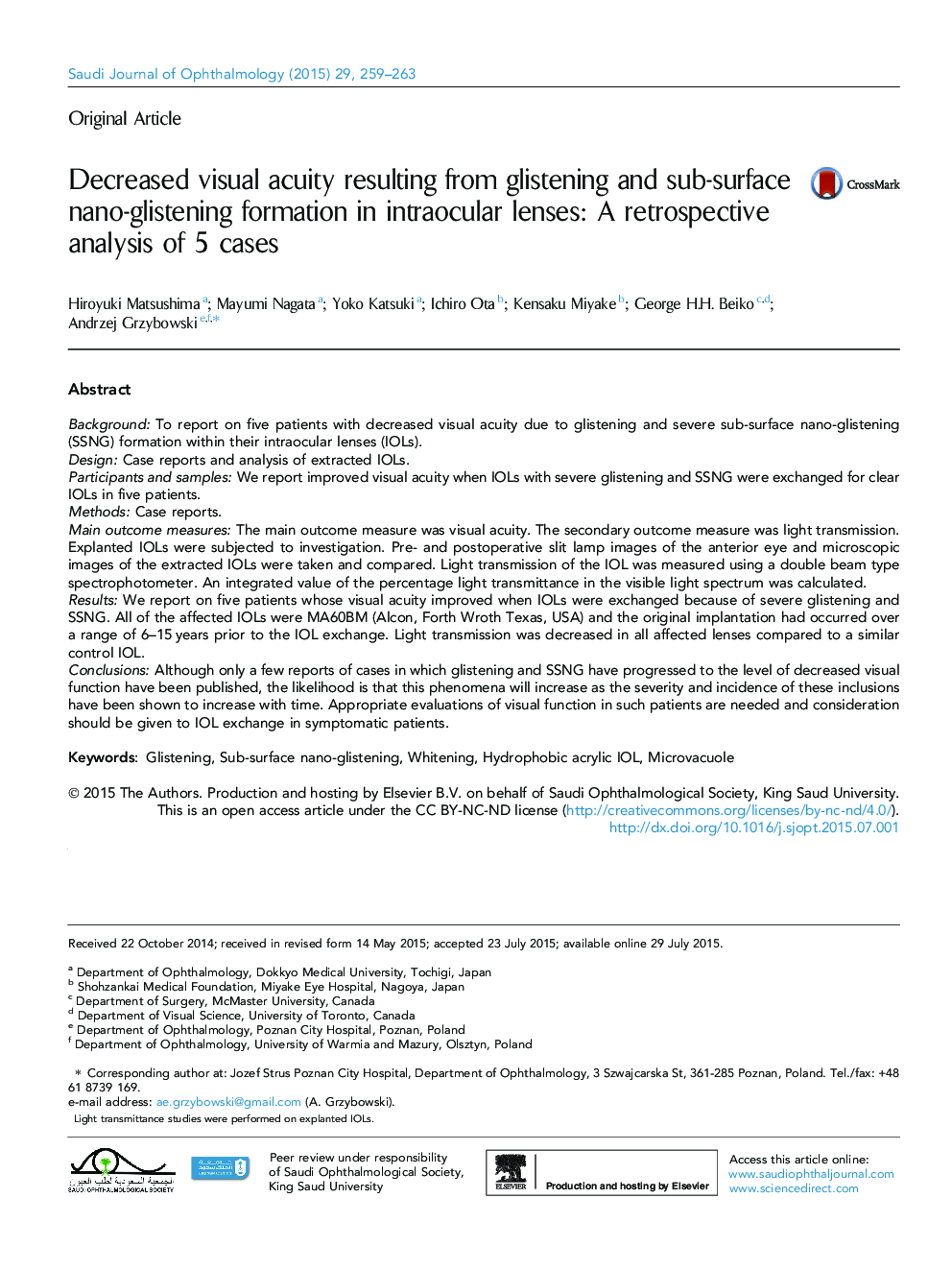| Article ID | Journal | Published Year | Pages | File Type |
|---|---|---|---|---|
| 2698552 | Saudi Journal of Ophthalmology | 2015 | 5 Pages |
BackgroundTo report on five patients with decreased visual acuity due to glistening and severe sub-surface nano-glistening (SSNG) formation within their intraocular lenses (IOLs).DesignCase reports and analysis of extracted IOLs.Participants and samplesWe report improved visual acuity when IOLs with severe glistening and SSNG were exchanged for clear IOLs in five patients.MethodsCase reports.Main outcome measuresThe main outcome measure was visual acuity. The secondary outcome measure was light transmission. Explanted IOLs were subjected to investigation. Pre- and postoperative slit lamp images of the anterior eye and microscopic images of the extracted IOLs were taken and compared. Light transmission of the IOL was measured using a double beam type spectrophotometer. An integrated value of the percentage light transmittance in the visible light spectrum was calculated.ResultsWe report on five patients whose visual acuity improved when IOLs were exchanged because of severe glistening and SSNG. All of the affected IOLs were MA60BM (Alcon, Forth Wroth Texas, USA) and the original implantation had occurred over a range of 6–15 years prior to the IOL exchange. Light transmission was decreased in all affected lenses compared to a similar control IOL.ConclusionsAlthough only a few reports of cases in which glistening and SSNG have progressed to the level of decreased visual function have been published, the likelihood is that this phenomena will increase as the severity and incidence of these inclusions have been shown to increase with time. Appropriate evaluations of visual function in such patients are needed and consideration should be given to IOL exchange in symptomatic patients.
